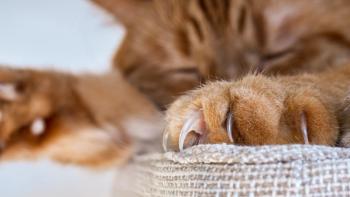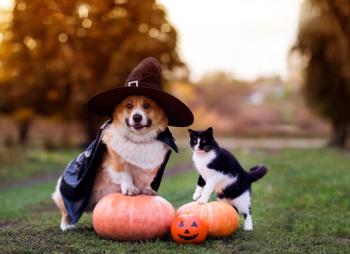
Gonadectomy Status Affects How Long Dogs Sniff Another Dog
A dog’s urine chemistry changes after a gonadectomy, creating a scent that may take longer for other dogs to analyze.
According to a study on dog sniffing behavior published in
For domestic dogs, scent marking plays several important roles, including defining territories and communicating information about social and reproductive status. Male dogs pay particular to reproductive status information to determine whether a female conspecific is in heat.
Previous rodent and canine studies demonstrated that gonadectomy can alter urine chemistry by changing the presence and quantity of certain urine compounds; interestingly, the time of year at which a dog is gonadectomized can also affect urine chemistry. To date, it is not fully understood how animals interpret such chemical alternations and if the alterations negatively affect communication between dogs.
RELATED:
- Can Sniffing Behavior Help Dogs Recognize Themselves?
- Voided Urine Can Be Used to Accurately Diagnose Canine Urinary Tract Infections
Although anecdotal evidence suggests that dogs spend more time sniffing urine from gonadectomized than intact dogs, published studies on this topic have reported conflicting results. The current pilot study, conducted by researchers in the United Kingdom, sought to confirm if sniffing time differs for urine from gonadectomized versus intact dogs.
Sniffing Observations
Urine samples were collected from 20 dogs in one city; 10 were intact and 10 were gonadectomized, with each sex evenly represented. Researchers recruited 12 male and female tester dogs from a different city. The tester dogs were of various breeds and gonadectomy status.
For testing, the tester dogs sniffed the urine samples, which were presented in a randomized order. A stopwatch recorded sniffing time.
For both male and female urine samples, “Dogs spent significantly longer smelling urine from gonadectomized individuals than from intact individuals,” the researchers observed; this finding supported previous anecdotal reports on urine sniffing behavior in dogs.
Neither age nor sex of the tester dogs significantly influenced sniffing time, although there was a trend for longer sniffing times with intact than gonadectomized male testers. Researchers acknowledged that there may have been too few tester dogs to detect statistical significance of sex and age.
Interpretations
Dogs may have spent more time sniffing urine from gonadectomized dogs because the urine chemistry was unfamiliar. Interestingly, this finding mirrors previous reports of dogs spending more time analyzing unfamiliar human behaviors to try to understand the new visual information.
The findings contrast with those of a study reporting that dogs spent less time sniffing gonadectomized dog urine. This contrast may be due to testing environment differences. The current study’s dogs were tested indoors and had fewer distractions, while those in the other study were tested outdoors. Overall sniffing duration was longer for indoor than outdoor (12 vs 5 seconds), suggesting that the environment may affect how long dogs sniff urine, “dependent on whether it is urine from an intact or gonadectomized dog,” the researchers noted.
Looking forward
The current study was limited by a small test population and no analysis of how breed or age of gonadectomy affects urine sniffing behavior. The researchers proposed larger studies to further explore canine scent communication and its varied relationship with gonadectomy.
Dr. JoAnna Pendergrass received her Doctor of Veterinary Medicine degree from the Virginia-Maryland College of Veterinary Medicine. Following veterinary school, she completed a postdoctoral fellowship at Emory University’s Yerkes National Primate Research Center. Dr. Pendergrass is the founder and owner of
Newsletter
From exam room tips to practice management insights, get trusted veterinary news delivered straight to your inbox—subscribe to dvm360.






